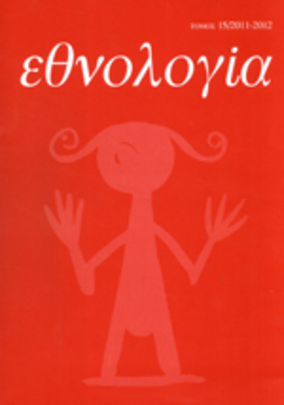Πολιτισμική αλλαγή και υλικός πολιτισμός : η κοινωνική ιστορία της "κολαΐνας" στην Όλυμπο Καρπάθου
Part of : Εθνολογία : περιοδική έκδοση της Ελληνικής Εταιρείας Εθνολογίας ; Vol.1, No.1, 1992, pages 85-116
Issue:
Pages:
85-116
Parallel Title:
Cultural change and material culture : the social history of the "colaïna" in Olymbos, Karpathos (Greece)
Author:
Abstract:
This article, focuses on culture change in contemporary Olymbos, a Greek village on the island of Karpathos, in a socio-historical perspective. The cultural biography of a local traditional chest ornament is used as a methodological tool for the presentation and analysis of the ethnographic material.Since the 19th century and under the influence of such major forces as outgoing migration, foreign military rule, tourist development and technological improvement, the Olymbos culture has been profoundly transformed. This transformation concerns both the abstract ideational and the material aspects of the olymbian world. One central element of the local material culture whose social history parallels the process of culture change in contemporary Olymbos is a woman’s gold coin necklace called «colaïna».The «colaïna» originates from the coin necklaces used in many traditional Greek and Eastern Mediterranean societies. In the late 19th century the «colaïna» replaced the pre-existing silver ornaments and evolved into a central element of the olymbian material culture: a dowry item and a chest ornament with aesthetic, economic and symbolic value. From 1890 until 1990 the successive tranformations in the form, use, and value of the «colaïna» were closely related to the different migration patterns, the shift of the local economy from subsistence to monetary and the process through which local migrants with money wealth took over the socio-economic power from the hands of the «kanakari(d)es» (hereditary landowners with titles of nobility). In the post World War II period the «colaïna» was gradually turned into a prestige item and a cultural symbol of the olymbian identity. Its gold coins embody, on the one hand, the village’s connection in time and space to an international social, political, and economic context, and on the other hand, the continuous process of sociocultural change following internal conflict and rearrangement within the community itself.
Subject:
Subject (LC):
Notes:
Περιέχει εικόνες και βιβλιογραφία




